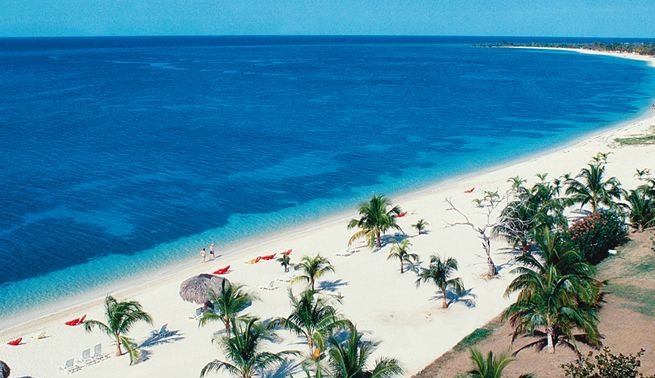
The performance of Cuba’s tourism is based on the circumstances of events
The tourism sector is now at a crossroads. While understanding the unique history of the Cuban tourism sector is important in determining the way forward, the quantifiable measurements often used to describe its success (arrivals, receipts, jobs, and more) only tell a small part of the story. Especially in situations where the growth of international tourist arrivals and the development of tourism infrastructure are prioritized among the most successful indicators.
The management and promotion of tourism has commonly been characterized by a reductionist perspective, which looks at tourism from a purely economic angle and not as a complex and fragmented industry, highly dependent on external circumstances, and which is inserted into the social, environmental, cultural and economic life of each territory.
A sector historically marked by high volatility due to foreign dependency, external shocks and limited market diversification, the tourism industry in Cuba today is perhaps facing its greatest challenge of the last 30 years.
Since the beginning of 2020, the appearance of a new SARS-Cov II pandemic, represents a before and after for tourist activity in the world and in particular in Cuba, because the crisis is exceptional. The transformations and changes to face this unprecedented new reality will be historic in size, speed and scope. And these transformations will lastingly alter travel markets, the way people travel, communicate, work, consume and interact with others.
For two years, the impacts of COVID-19 have placed unprecedented pressure on the livelihoods, well-being of people, and organizations in this sector. The pandemic crisis has also shown the connectivity between health issues, climate and sustainability; driving dramatic and rapid changes in the behaviors of people, organizations and systems at all scales. Under this complex scenario, the resilience of the Cuban tourism sector cannot be discussed without acknowledging U.S. Cuba policy as one of the greatest threats.
During the last five years several factors have hindered travel and tourism activity towards Cuba, among them, the economic restrictions and sanctions of the Donald Trump and Joe Biden administrations, the slowdown in international trade, trade wars, and foreign and global conflicts. The effects of these factors have created uncertainty, discomfort and inconvenience for many sectors of the world’s population, seriously affecting tourism and global tour operators.
This situation, now aggravated by the known and unknown consequences of the war between Russia and Ukraine, has affected tourism from those countries influencing very negatively in the tourist flows from the main European emitters. In other words, the greatest uncertainty, beyond the suspension of arrivals from Russia and Ukraine is in how it will affect, in the medium or long term, the issuing markets from Europe.
Countries such as the United Kingdom, Germany, Spain, Italy, France and others from the EU are more concerned about the Ukraine war than thinking about vacations or pleasure trips. To this is added the increase in fuel prices that implies a considerable increase in the cost of plane tickets, taking into account that the main tourist markets for Cuba are far-flung places.
The increase in arrivals of Russian tourists to Cuba, as well as to other Caribbean destinations, has been a circumstantial event, given certain known circumstances — such as the suspension of trips from traditional issuers such as Canada and Europe due to the restrictions of the pandemic and the closure of airports, requirements for PCR tests, vaccination certificates, etc. From January 2020 to the end of February 2022, the flow of arrivals of Russian tourists to Cuba only reached 256,026 visitors. However, it was the fastest growing market.
A similar conjunctural event for Cuban tourism occurred in the period 2016-2018 with U.S. tourism in which the island received 1,542,689 Americans, a tourist flow that was suspended by the Trump administration in 2019, with several restrictive sanctions on travel, on the airlines and cruise ships, and the Cuban hotels that were black listed.
It is interesting to know that from 1991 to 2018, a period characterized by constant ups and downs in the external scenario, 56,340,000 international visitors arrived in Cuba, including 16 million Canadians and 2.5 million Americans, which represents that 30% of all international visitors to Cuba in these 27 years have been from North America.
For Cuba, Canadian tourism has been the main market, surpassing figures of one million annual tourists between the years 2011 and 2019. After the first two months of this year, the island received 185,650 international visitors, and Canada once again occupies place among the main emitters for Cuba with 40,820 tourists.
The greatest obstacles and challenges faced by the Cuban tourism industry in its performance and development have been the same for many years. Now it’s the war in Ukraine at a point when the country is barely recovering from the aftermath of the Covid-19 pandemic.
The biggest problems affecting tourism in Cuba are:
- The constant hostile policy of the U.S. government.
- Restrictions and/or prohibitions on commercial airlines.
- The cruise travel ban.
- Limitations on supplies and international suppliers.
- Obstacles in financial and interbank relations.
- Limited access to source markets through tour operators.
Given the current scenario, which threatens travel from traditional European markets, the option will be to compensate for these decreases with actions aimed at rescuing travel from Canada, Argentina, Chile, Mexico, Colombia and Central America. And giving special relevance to the important market segment of Cubans residing abroad.
Cuba is a sun and beach tourist destination where the largest and best hotel infrastructure in the country is concentrated. Therefore, this product is a priority in tourism to the international market. Nature and cultural tourism also have potential in a post-pandemic stage and in the post-war future.

